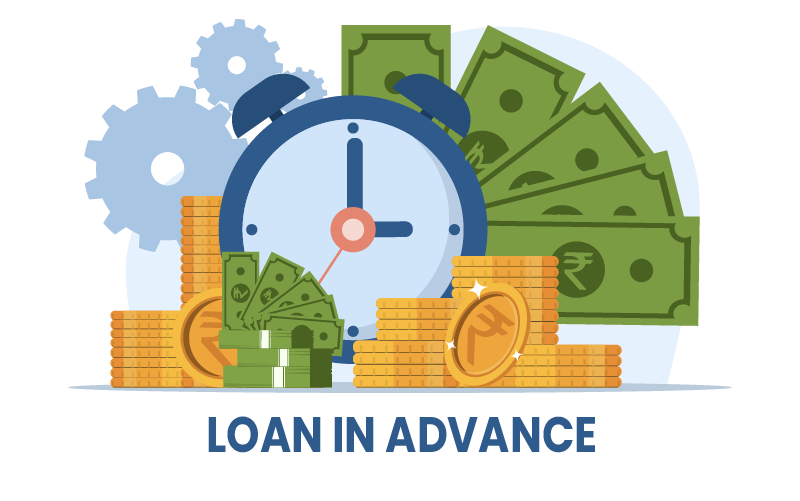

Did You Know?
We serve loans, the best way you can borrow

We serve loans, the best way you can borrow

Want to know the loans and advances meaning? Well, you might feel stuck between paying bills and buying groceries when money gets tight before payday. Such financial trouble may hurt your peace of mind. It keeps you up at night worrying about tomorrow. Loans and advances offer different paths to speedy cash relief when you need it most.
lendingplate offers personal loans that match your specific needs without complicated paperwork or long waiting periods.
Financial products come in various forms to match different needs and situations. The right choice depends on what you need the money for and how quickly you need it. Find out the types of loans and advances at first –
Loans are structured financial products with specific purposes and repayment terms. Each type serves different needs and comes with unique features.
Secured loans require collateral like property or vehicles that the lender can claim if you default. They offer lower interest rates as well as higher borrowing limits due to reduced lender risk. Approval chances increase even with a less-than-perfect credit history. Common examples include home loans, car loans, and gold loans.
Unsecured loans do not need collateral but rely on your creditworthiness and income stability. They generally feature higher personal loan interest rates to offset increased lender risk. Approval depends heavily on credit scores and income proof. Personal loans and credit cards fall into this category. Processing happens faster without property valuation or documentation. Advances offer quick access to funds before your regular income arrives. They bridge short-term cash flow gaps with minimal paperwork.
Advances offer quick access to funds before your regular income arrives. They bridge short-term cash flow gaps with minimal paperwork.
Business entities use bill purchases in various scenarios. They can get the money from the bank provided they keep invoices or bills as security.
Bank overdrafts allow spending more than your account balance up to a pre-approved limit. The bank covers payments that would otherwise bounce due to insufficient funds. You pay interest only on the amount used and for the time period used.
Cash credit provides flexible borrowing against pledged assets like property or investments. You access funds as needed up to your approved limit based on collateral value. Interest applies only to the amount you actually use rather than the entire credit line.
Payday loans offer quick cash to tide you over until your next salary arrives. They require proof of regular income and an active bank account for approval. Repayment happens automatically when your paycheck lands, usually within a few weeks of borrowing.
Here is the difference between loans and advances tabulated in the table –
| Factor | Loans | Advances |
| Purpose | Long-term financing for major expenses and planned purchases | Short-term funding for immediate cash needs and emergencies |
| Amount | Larger sums typically range from ₹10,000 to several lakhs | Smaller amounts are usually limited to a portion of the expected income |
| Duration | Extended periods from months to several years | Brief periods ranging from days to a few months |
| Interest Rates | Fixed or floating rates between 12-36% annually | May have flat fees or higher interest rates (sometimes calculated daily) |
| Approval Process | Comprehensive documentation, including income proof and credit checks | Minimal paperwork focused on proving upcoming income |
| Repayment Method | Regular monthly instalments on fixed dates | Single lump sum or automatic deduction from the net income |
| Credit Impact | A major influence on credit score with regular reporting | Limited or no reporting to credit bureaus unless defaults occur |
| Collateral | May require assets as security for larger amounts | Rarely requires collateral besides future income guarantee |
| Penalties | Structured late payment fees and possible foreclosure charges | Higher rollover fees or significant penalties if not repaid on time |
| Flexibility | Fixed terms with possible prepayment options (may include charges) | Very short-term with limited extension possibilities |
What are loans and advances? Are they similar? Well, both loans and advances serve as financial tools that provide temporary access to funds you don't currently have.
Your unique financial situation and specific needs should guide which option makes more sense. Several factors can help determine the best choice for you.
Purpose of Funds
Loans work better for planned major expenses requiring substantial amounts. Advances suit unexpected bills or shortfalls when payday feels too far away.
Time Sensitivity
When facing truly urgent situations requiring immediate cash, advances typically deliver faster. Loan approvals generally take longer but provide more money.
Cost Considerations
For longer financial needs, properly structured loans often cost less overall. Short-term advances might seem expensive – but they cost less.
Repayment Capacity
Your ability to make regular payments over time makes loans manageable. Having guaranteed upcoming income makes advances safer financial choices.
Both options have their place in personal finance when used responsibly for appropriate situations. The right choice depends entirely on your specific circumstances.
Getting quick funds from lendingplate happens through a simple online process designed for speed and convenience.
Understanding the key loans and advances differences helps you make smarter money decisions when facing cash shortfalls. Each option serves different needs - loans for bigger planned expenses and advances for quick emergency funds. Your specific situation should guide which path makes more sense financially.
lendingplate offers personal loans with quick processing for those moments when life demands immediate financial attention. Remember that responsible borrowing means taking what you need and planning your loan repayment carefully to maintain financial health. Making informed choices today protects your financial freedom tomorrow.
Loans typically serve planned major expenses like home renovations or education fees that need substantial funding. Advances address immediate cash shortfalls when you need money quickly before your next paycheck arrives.
Loan repayments follow structured schedules with fixed monthly payments over months or years. You receive complete repayment schedules upfront. Advances typically require full repayment in a single payment when your next income arrives.
Loans usually carry lower annual percentage rates but accumulate more interest over their longer terms. Personal loans from lendingplate range between 12-36% annually depending on your profile. Advances often have higher effective rates or flat fees that seem small but translate to significant annual percentages. The
Both individuals and businesses can access loans and advances with slight variations in requirements and terms. Businesses must demonstrate positive cash flow and viable operations for business financing. Advances work similarly across categories with individuals using salary advances while businesses leverage invoice or merchant cash advances.
Loan applications involve more comprehensive documentation including income proof, credit checks and sometimes collateral verification. Advance applications focus primarily on verifying your upcoming income source rather than extensive financial history.
Download our personal loan app to apply for a personal loan. Get up to 2Lakhs* as a personal loan. Download Now!
Sign into avail a personal loan up to ₹ 2,50,000
Register to avail an instant loan in just a few minutes. Fulfil your financial needs with our loan and repay in easy EMIs.
Apply NowUnifinz Capital India Limited is a Non Banking Finance Company (NBFC) registered with the Reserve Bank of India (RBI). lendingplate is the brand name under which the company conducts its lending operations and specialises in meeting customer’s instant financial needs.
Corporate Identity No. (CIN)
L 1 7 1 1 1 D L 1 9 8 2 P L C 0 1 3 7 9 0
RBI Certificate of Registration No (CoR):
1 4 . 0 0 2 3 3
Registered Office :
Rajlok Building (Floor-5), 24 Nehru Place, New Delhi-110 019